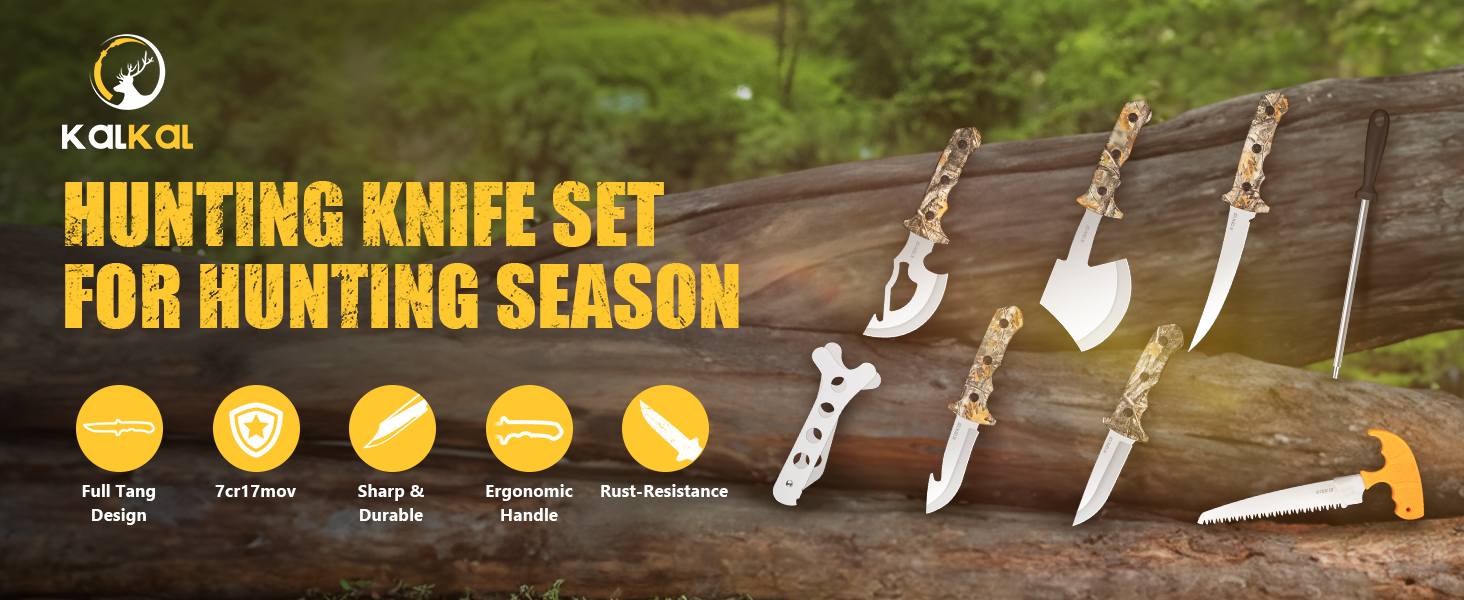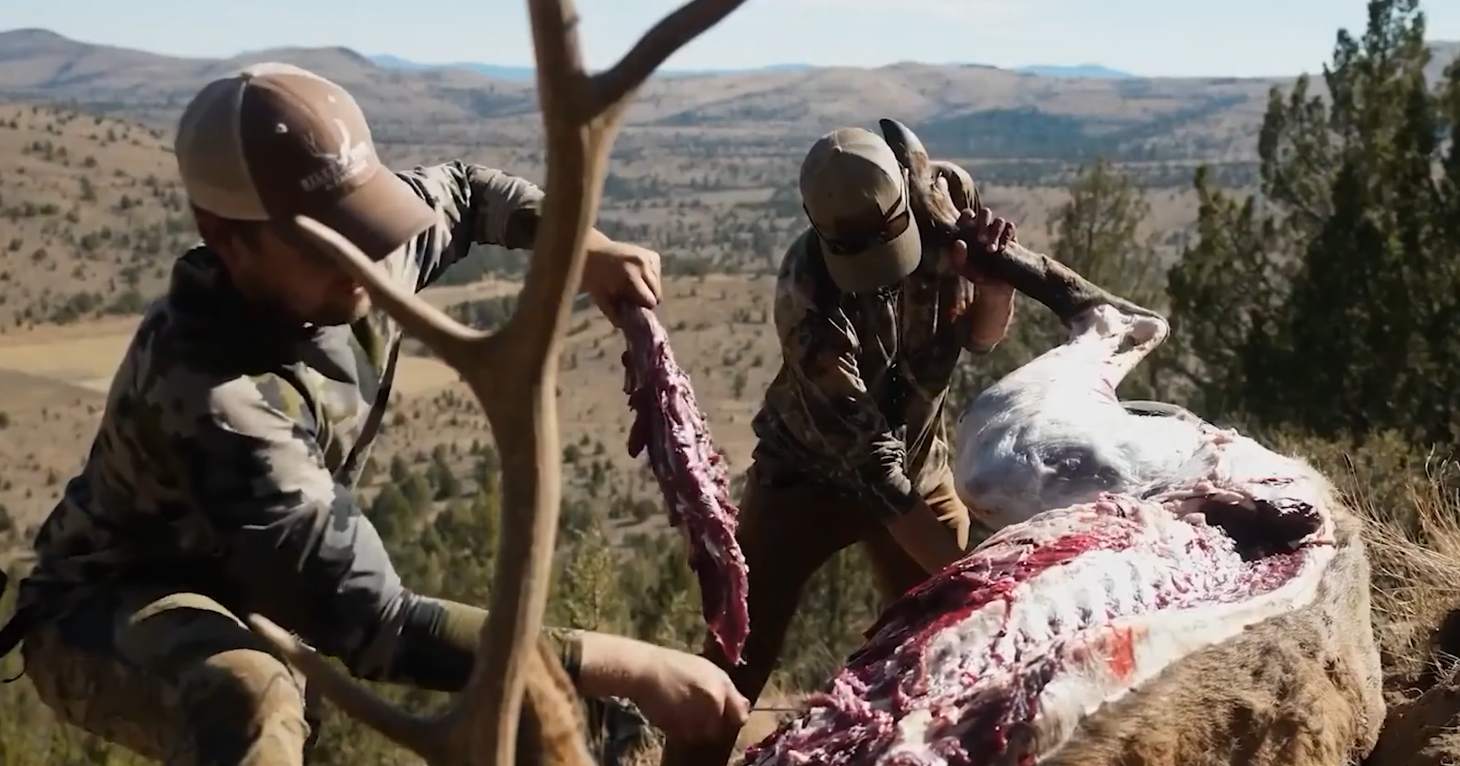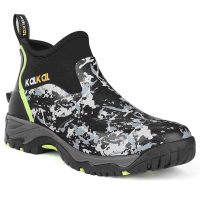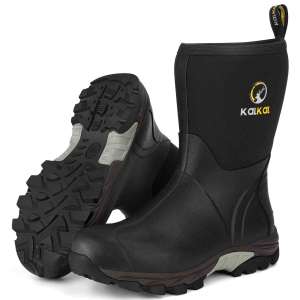Learning how to dress game in the field is an essential accomplishment for hunters so the meat is good and enjoyable to eat. However, it can also be a problem if you don’t know how can you protect yourself when dressing game.
Many hunters get worried about safety measures, the right methods, and the risks involved in field dressing. This blog post will therefore explore the necessary procedures required, measures to be taken, and the pitfalls to be avoided when putting on those game outfits.
With this information, hunters can prepare their hunted animals for consumption without risking their lives or those of people around them.
Essential Guidelines to Field Dress Games
Field dressing is the essential process of removing the internal organs from a game animal immediately after it’s killed. This crucial step helps to preserve the meat and prevent spoilage by minimizing the exposure of the meat to bacteria and other contaminants.
By promptly removing the internal organs, you can significantly reduce the risk of foodborne illnesses and ensure that the meat remains safe for consumption.
Should You Dress The Animal Immediately After Harvesting?
Yes, it is very important to field dress an animal as soon as possible. It is important that as early as possible, the internal organs are taken out to prevent bacteria from developing and causing the meat to spoil. Since refrigeration is not an option, exposure to heat and moisture would further contribute to rot.
As stated earlier, the internal organs of any game animal are more prone to bacterial growth and development than other parts of the body. These organs are warm and moist, hence facilitating the growth of bacteria on the food items. Also, the digestion system contains many bacteria that are likely to infect the meat if they are not washed immediately.
This way there is a reduced chance of bacteria spreading in the animal which has been hunted down and killed. This will assist in making sure that the meat is safe for human consumption as well as enhancing the shelf life of the meat.
What To Prepare For Field Dressing?
Before you begin field dressing, you should have the following equipment:
- Sharp knife: A sharp knife is essential for making clean cuts.
- Gloves: Gloves will protect your hands from bacteria and animal fluids.
- Game bags: Use different bags to store the meat and store organs and other waste.
Are There Difference Between Field Dressing Big Games And Small Games
Yes, there are a few differences between the two, though.
Large game animals like deer or elk would need a more forceful handling. For this procedure, you may require a saw to slice through the ribs and the sternum.
Small games such as the rabbit or squirrel, for instance, are easier to dress since it takes less time as compared to the larger game.
What Are Steps To Field Dressing Games?
Make a clean incision: First, start by cutting the skin from the anus down to the sternum while avoiding the intestines. This cut will create an opening for reaching the internal organs.
- Remove the internal organs: Be very gentle while preparing the intestines, liver, heart, and other organs of poultry. These should be disposed of in a transparent polyethylene plug to complete the process of disposal. Take care not to poke the intestines since this may lead to the release of toxic bacteria.
- Cut the diaphragm: After the removal of the internal organs, dissect through the diaphragm the muscular sheet that forms the floor of the thorax and the roof of the abdomen. This will help you access the lungs and heart organs.
- Remove the lungs and heart: Gently remove the lungs and heart. You can leave these organs intact if desired, but their removal helps check for spoilage in food items.
- Rinse the carcass: After cutting the skin, wash the inside part of the carcass using clean water to wash off the remaining blood or other materials. This will assist in reaching the objective of making sure the meat is clean and that it is safe to consume.
- Bag the meat: Put the hunted animals in game bags to minimize the chances of contamination and for easy carriage.
- Dispose of waste: Dispose of the organs and other wastes as may be required in the country of practice. According to recent studies, this is essential to avoid the spread of germs as well as ensure the sustenance of cleanness.

Are There Any Dangers For Animal Dressing?
Indeed, quite several risks are inherent in the handling of game animals particularly when one is skinning, dressing, or butchering them in the field.
Hunters need to know of these dangers so they can avoid them in one way or another. Here are some potential dangers that hunters may encounter:
- Sharp objects: Meat-cutting implements like knives, saws and other sharp instruments used in butchering meat may lead to severe injuries if not properly managed. In general, ensure that you use sharp tools carefully and keep them well-sharpened.
- Animal fluids: Animal fluids, such as blood and bile, can cause infections. To avoid contact with these substances, wear gloves and protective clothing.
- Bacteria: Game animals are capable of harboring bacteria like E. coli, Salmonella, and Trichinella. The appropriate management and sanitation are crucial measures to avoid the proliferation of such bacteria.
- Wildlife diseases: Occasionally, the diseases that affect the wildlife, for instance, the CWD, or the rabies, may affect human beings in one way or another. You should know whether such diseases are common in your region and if they are, be careful.
- Cuts and punctures: When butchering animals, one may end up getting cuts or even getting punctured by sharp objects. They should always be gentle with animals and never rush them.
- Wildlife encounters: Although related to butchering they may come across aggressive or defense-posturing animals including bears or moose while hunting. Be cautious to prevent aggressive situations from arising.
To minimize these risks, hunters should
- Use proper safety equipment: Wear gloves, protective clothing, and eye protection.
- Handle tools with care: Use sharp tools cautiously and maintain them properly.
- Practice proper sanitation: Clean and disinfect equipment and work surfaces regularly.
- Be aware of local wildlife: Be familiar with the types of wildlife in your area and their potential behaviors.
- Follow safety guidelines: Adhere to all local hunting regulations and safety guidelines.
Safety Tips For Field Dressing Games
Field dressing games can be a rewarding experience, but it’s essential to prioritize safety to prevent accidents and injuries. Here are some important safety tips to keep in mind:
General Safety Tips
The first step is to choose a safe location. Skin the animal with firearms in a clean lit flat ground area free from distractions and obstacles. It is advisable to wear gloves, strong boots, and protective clothing to reduce the chances of getting cuts, punctures, and contact with animal fluids.
Take your time so that you do not hurry when cutting and ensure that your cuts are neat and straight. Always be aware of your environment and identify any threats – sharp rocks, terrains with low stability, or wildlife.
After field dressing, remember to quickly wash and disinfect your tools and instruments to avoid the spread of germs and diseases.
Specific Safety Tips
Avoid contact with bodily fluids: Minimize contact with blood, bile, and other animal fluids, as these can contain harmful bacteria or viruses.
Handle intestines with care: Be cautious when handling the intestines, as they can contain harmful bacteria. Avoid puncturing them to prevent the release of their contents.
Use a cutting board: Place the animal on a clean cutting board to protect your workspace and minimize the spread of bacteria.
Dispose of waste properly: Properly dispose of any waste materials, such as organs or discarded tissues, to prevent the spread of disease.
Seek medical attention if necessary: If you experience any injuries or symptoms after field dressing, seek medical attention promptly.
Necessary Tools and Equipment
- Sharp knife: A sharp hunting knife kit is essential for making clean cuts.
- Gloves: Gloves will protect your hands from bacteria and animal fluids.
- Game bags: You can buy and use special bags to store the meat.
- Plastic bags: You can use any plastic bag to store organs and other waste.
- Cutting board: A clean cutting board can help to prevent the spread of bacteria.
- Sanitizer: A hand sanitizer can help to keep your hands clean.
Common Mistakes To Avoid When Butchering
In the field dressing of game animals, timeliness is very important to conserve the animals’ meat. Here are some common mistakes that hunters should avoid.
- ❌Delaying field dressing: This is so because when you aim at field dressing an animal then there is less time in which bacteria can multiply hence spoiling the meat.
- ❌Making unclean cuts: The cuts can become very grimy or infected, thus it will just be spreading bacteria on the meat.
- ❌Puncturing the intestines: This means that one can cut the intestines and this will result in washing off dangerous bacteria on the meat.
- ❌Leaving organs in the carcass: In this case, when you leave the internal organs in the carcass, bacteria will multiply rapidly.
- ❌Not sanitizing equipment: Dirty equipment may also spread bacteria on the meat since bacteria can easily transfer through equipment that comes in contact with them.
- ❌Handling meat with bare hands: Avoid hand contact with meat to avoid the transfer of bacteria around.
- ❌Not following local regulations: Not following regional laws when hunting may result in consequences such as fines, legal repercussions, etc.
Conclusion
The process commonly known as field dressing game animals is quite crucial especially to hunters in this regard as it assists them in preparing their harvested meat for cooking.
To sum up, hunters can dress game properly in the field if they follow proper procedures, take proper precautions, and avoid some mistakes. It is important to remember that safety and sanitation are greatly concerned about meat’s quality and edible aspects.



















Leave a reply